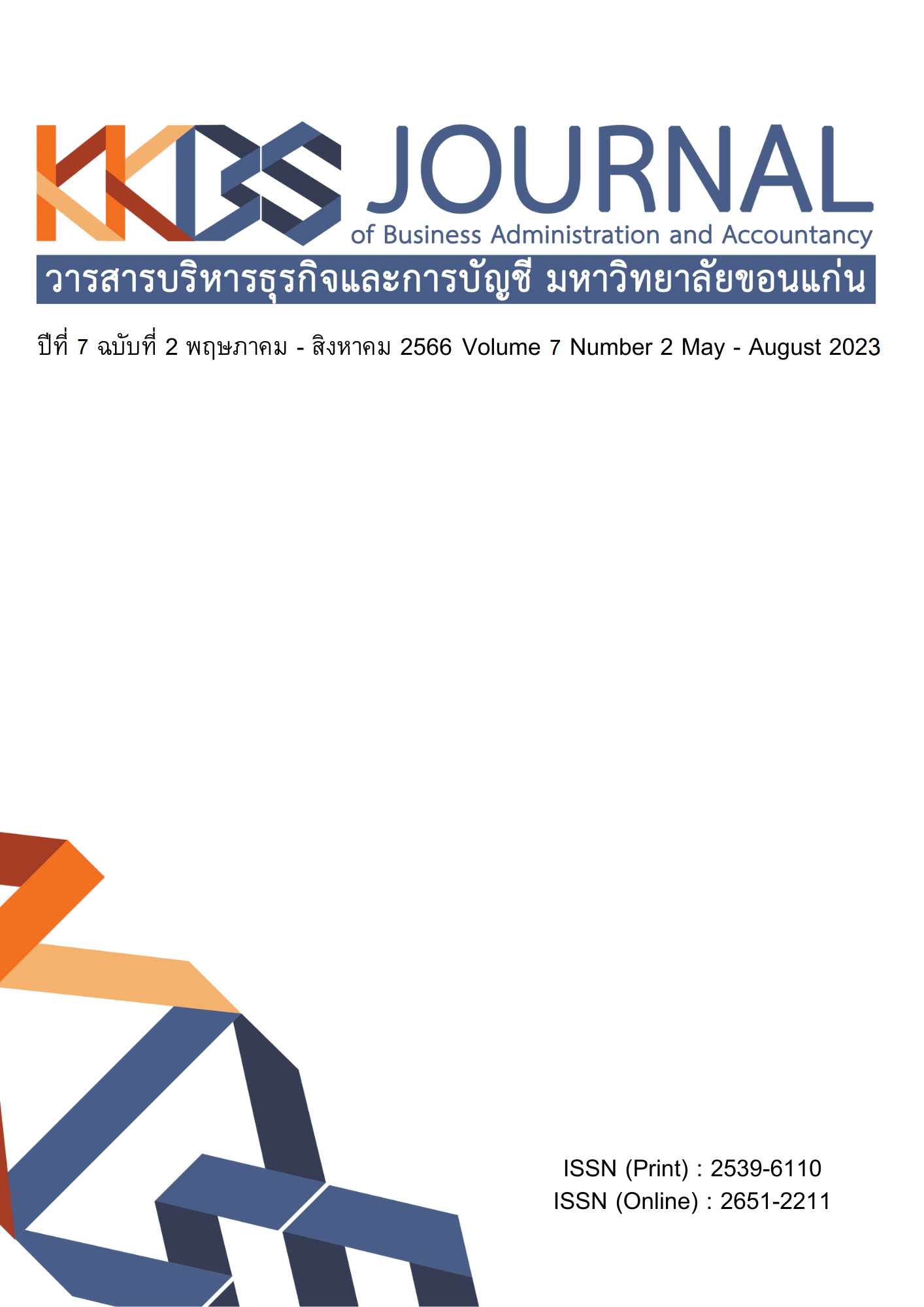The Comparison Between the Expectations and Perceptions of Thai Tourists Towards Communication Channels of the Secondary Destination Image of Ratchaburi Province, Thailand
Main Article Content
Abstract
The purposes of this research towards the communication channels of the secondary destination image, Ratchaburi were (1) to study the Thai tourists’ expectations, (2) to study the Thai tourists’ perceptions, (3) to compare the expectations and perceptions of Thai tourists, (4) to study how the Thai tourists’ expectations influencing the re-visiting tourists, and (5) to study how the Thai tourists’ perceptions influencing the re-visiting tourists. This research was collected using questionnaires with accidental sampling method from 400 Thai tourists and analyzed by descriptive and inferential statistics. The research results found that (1) the demographic characteristics varied with different opinion levels approaching the perceptions toward the communication channels of the secondary destination image at the significance level of 0.05. (2) The demographic characteristics varied with different opinion levels approaching the expectations toward the communication channels of the secondary destination image at the significance level of 0.05. (3) The average of opinion levels approaching the perceptions was significantly higher than the expectations toward the communication channels of the secondary destination image at the significance level of 0.05. (4) The opinion levels approaching expectations toward the communication channels of the secondary destination image correlated with the re-visiting tourists at the significance level of 0.05. (5) The opinion levels approaching perceptions toward the communication channels of the secondary destination image correlated with the re-visiting tourists at the significance level of 0.05.
The research results have augmented the academic implication as to the strategic guideline following tourists and communication channels of Ratchaburi, the tourist destination with a lack of destination image encouragement. Therefore, this research is an advantage for creating a circular economy and improving the quality of life.
Article Details

This work is licensed under a Creative Commons Attribution-NonCommercial-NoDerivatives 4.0 International License.
The articles published in the journals are the authors' opinions, not the opinion of the editorial team or administrative staff. The articles published is copyright of the Journal of Business Administration and Accounting, Khon Kaen University.
References
Bernstein, B. (1999). Vertical and Horizontal Discourse. British Journal of Sociology of Education, 20(2), 157-173.
Cochran, W.G. (1977). Sampling Techniques (3rd Ed.). New York: John Wiley and Sons Inc.
Echtner, C. M. & Ritchie, J. R. B. (1991). The meaning and measurement of destination image. The Journal of Tourism Studies 2 (2): 2-12.
Echtner, C. M. & Ritchie, J. R. B. (2003). The meaning and measurement of destination image. The Journal of Tourism Studies 14 (1): 37-48.
Engel, J. (2006). Consumer behavior. Mason: OH: Thomson Higher Education.
Gee, C.Y., Choy, D.J.L. & Makens, J.C (1984). The Travel Industry (2nd ed.). New York: Van Nostrand Reinhold.
Henkel, R., Henkel, P., Agrusa, W., Agrusa, J. & Tanner J. (2006). Thailand as a tourist destination: Perceptions of international visitors and Thai residents. Asia Pacific Journal of Tourism Research, 11(3), 269-287.
Johnston, E. (2016). 5 Steps to understanding your customer’s buying process. Retrieved August 19, 2018, from https://www.b2bmarketing.net/en-gb/resources/blogs
Kozak, M. & Decrop, A. (2009). Handbook of tourist behavior: theory and practice (1st Ed.). New York: Routledge.
Leksakundilok, A. (2017). Tourism: Super Size ME. TAT Review Magazine 3/2017. Retrieved July 29, 2017, from https://issuu.com/etatjournal/docs/tat_32017
McIntosh R.W. & Goeldner C.R. (1986). Tourism Principles, Practices, Philosophies. New York: John Wiley & Son.
Mill, R. C. (1990). Tourism: The International Business. New Jersey: Prentic Hall.
Mooij, D. M. (2011). Consumer Behavior and Culture (2nd ed.). California: Sage Publication. Inc.
Moolla, O. (2012). The Motivation of International Tourists for Health Tourism in Bangkok Metropolis. Chulalongkorn University. Retrieved July 29, 2017, from http://doi.org/10.14457/CU.the.2012.724
Oelker, D. (2007). Travel and Tourism Marketing (Student Edition). USA: The Thomson Corporation.
Phonphithak, K., Pimpuang, T., Wongchomphu, W., Chaisuk, S., & Meeprom, S. (2019). The Influence of Tourism Attributes on Tourist’s Perceived Value of the Tourism Community-Based in The Khong River Basin, Nong Khai Province. KKBS Journal of Business Administration and Accountancy, 4(1), 1-20. (In Thai)
Pike, S. (2008). Destination Marketing (1st ed.). London: Routledge.
Reynolds, W. H. (1965). The role of consumers in image building. California Management Review, 7(3), 69-76.
Sonda, J. (2016). Tourism Image and Perception of Marketing Public Relation Affecting Thai Tourisms’ Revisiting Chanthaburi Province. Retrieved March 22, 2019, from http://dspace.bu.ac.th/jspui/handle/123456789/1880 (In Thai)
Soonsan, N., & Sungthong, S. (2020). Country Image and Destination Image in Thailand: WesternTourists’ Perspective. KKBS Journal of Business Administration and Accountancy, 4(2), 119-140. (In Thai)
Swarbrooke, J., & Horner, S. (2007). Consumer Behaviour in Tourism (2nd Ed.). London: Routledge.
Tungjaisathapad, P. (2018). Push Policy for Tourists Travelling from Main City to Secondary City. Retrieved September 10, 2019, from
https://thainews.prd.go.th/th/news/print_news/WNRPT6109100010001 (In Thai)
Weaver, D. B., & Lawton, L. J. (2011). Visitor Loyalty at a Private South Carolina Protected Area. Journal of Travel Research, 50(3), 335–346.


